Timeline
1954
Sherritt International
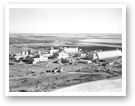
Construction finishes on Sherritt Gordon Mines Ltd.’s new, world-scale hydro-metallurgical plant in Fort Saskatchewan. It was built close to abundant natural gas supplies needed for the ammonia leach process.
1955
Chemtrade
Inland Chemicals completes construction of a sulfuric acid manufacturing plant on the site known today as Chemtrade.
1961
Dow Chemical

Dow Chemical’s new multi-million dollar plant begins operating during the summer. The site manufactures products for the agricultural, oil, gas, transportation and pulp and paper industries. Dow built the site at Fort Saskatchewan because of the readily available and low cost natural resources.
1969
Nutrien
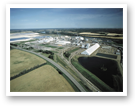
Imperial Oil completes construction of the largest integrated fertilizer complex in Canada, in Redwater. This facility is now owned by Nutrien.
1972
Keyera
Chevron completes construction of a fractionation, storage, and transportation terminal for natural gas liquids on the site now known as Keyera (Fort Saskatchewan).
1973
Plains Midstream
The Fort Saskatchewan site is built as a storage terminal for Natural Gas Liquids (NGLs) produced as a by-product of gas processing.
1975
Pembina
Redwater storage terminal and rail facility is built, now on the site owned by Pembina.
1979
Plains Midstream
The Cochin pipeline system starts transporting HD5 propane, ethane, and ethylene from Fort Saskatchewan to the mid-west United States and then to Windsor, Ontario.
1981
Fort Saskatchewan Regional Industry Association Established
Industry establishes the Fort Saskatchewan Regional Industry Association (FSRIA), a non-profit organization to foster economic stability and encourage commercial growth within the Fort Saskatchewan area, a recognized industrial center in Alberta.
1982
The Fort Saskatchewan Regional Industrial Association (FSRIA) was incorporated on March 22, 1982. There were 20 members at the time.
1983
Nutrien
Sherritt commissions a new world-scale (1,000 tonnes/day ammonia, 900 tonnes/day urea) nitrogen fertilizer plant in Alberta.
1984
Shell Canada

The $1.4 billion state-of-the-art Scotford Refinery opens along with a chemical plant at the Scotford site. Shell becomes the first refinery in the world to refine only synthetic crude oil from Alberta oil sands deposits.
1988
Changes to Machinery and Equipment Taxes
Working with the provincial government on Industrial Property Taxation, FSRIA successfully demonstrates the application of education taxes on top of the Machinery & Equipment taxes was not competitive with other jurisdictions in Canada. As a result of this work, and a commitment on the part of industry to invest an additional $20 billion in new plants, the government agrees to phase out education taxes from the Machinery & Equipment taxes paid by industry beginning in 1996 over a five-year period. With the industrial investment commitment achieved in 1997, education taxes were eliminated from the Machinery and Equipment taxes paid by industry in the 1998 tax year. The reduction in education taxes paid by industry was more than offset by increased taxes paid from the increased investment in the province.
1998
Pembina
TransCanada Pipelines (now TC Energy) and Nova Corp. announce plans to merge their operations, creating one of North America’s biggest natural gas pipeline systems. The new entity takes on the TransCanada name.
1990
Evonik
Dupont constructs a hydrogen peroxide facility in Sturgeon County that is now owned by Evonik (formerly named Evonik Degussa).
1991
Northeast Region Community Awareness and Emergency Response (NR CAER) Forms
Northeast Region Community Awareness and Emergency Response (formerly a subcommittee of FSRIA) forms as a non-profit organization to continuously strengthen an integrated emergency response capability in the region and to develop a cooperative community awareness program.
1995
Sherritt International
Sherritt Inc. creates Sherritt International Corporation, an independent Canadian public company. Sherritt Inc. retains the fertilizer business, Canadian oil and gas properties and the specialty metals and technology businesses.
1996
Nutrien

In the previous year, Sherritt Inc. is renamed Viridian Inc. Viridian Inc. splits into The Westaim Corporation and Viridian Inc. Later that year, Nutrien purchases Viridian Inc. (includes Redwater and Fort Saskatchewan facilities).
1996
Pembina
NCL (Novagas Canada) mobilizes construction crews to begin work on a natural gas processing project northwest of Fort St. John, British Columbia. The natural gas liquids would eventually be transported to NCL’s liquids fractionation facility in Redwater with capacity of 65,000 barrels of natural gas liquids per day. The project was on-stream in 1998. The facility is now owned by Pembina.
1997
Evonik
Evonik (formerly Evonik Degussa) purchases the Dupont Hydrogen Peroxide Plant (built in 1989/1990) located near Gibbons.
1997
Praxair
Praxair constructs an oxygen facility in Fort Saskatchewan to service Dow Chemical Canada.
1997
Umicore Canada
Umicore purchases the cobalt powder business from The Westaim Corporation and incorporates it as Umicore Canada.
1996
Alberta's Industrial Heartland Association Launches
The FSRIA Business and Economics Committee advances the concept of a collaborative approach to industrial growth between industry and the four host municipalities. This results in the formal launch of Alberta's Industrial Heartland Association in 1998.
2000
Fort Air Partnership Established
In the late 1990s, a few industrial members provided some ‘seed’ monies to establish Fort Air Partnership (FAP). Starting in 2000, all members of the industrial association provide ongoing support to the Fort Air Partnership, a non-profit organization that monitors the air people breathe in and around Alberta's Industrial Heartland.
2000
Air Liquide
Air Liquide's Scotford complex begins operation with oxygen and nitrogen gases produced for local industry along with liquid oxygen, nitrogen and argon for broader distribution throughout Alberta and the U.S.
2000
Chemtrade
Chemtrade purchases the specialty chemicals business from The Westaim Corporation.
2000
Pembina
Williams Energy purchases TransCanada Pipelines Ltd.’s (now TC Energy) interest in a number of key Canadian NGL and gas processing assets, including the Redwater Fractionator and Natural Gas Liquids storage facility now owned by Pembina.
2001
The Northeast Capital Industrial Association Forms
The Northeast Capital Industrial Association (NCIA) forms as a successor to the Fort Saskatchewan Regional Industrial Association (founded in 1981). Members wanted a new organization with a clearer mandate to understand and address environmental concerns related to industrial operations and development in the area. They also wanted an association through which industry could take cooperative action on other common interests.
2003
Pembina / Inter Pipeline
Provident Energy acquires the Redwater Natural Gas Liquids (NGL) fractionation and storage facility from Williams Energy Canada (now Inter Pipeline). Williams Energy retains the Olefin fractionation assets. In 2012, Pembina acquires Provident Energy.
2003
Community Notification System Introduced
NCIA partners with Northeast Community Awareness and Emergency Response (NR CAER) to launch a new community notification system, the first of its kind in Canada, featuring an UPDATEline and a call-out system.
2003
Shell Canada
Shell Canada’s Scotford upgrader – a joint venture project between Chevron Canada and Marathon Oil LP – starts processing bitumen from Shell’s Muskeg River mine.
2004
North West Upgrading
North West Upgrading secures approximately 17 square kilometers of industrial property near Redwater for the future construction of a new upgrader.
2004
Oerlikon Metco
Sulzer Metco acquires the Ambeon Division of The Westaim Corporation in Canada. As Sulzer Metco (Canada) Inc. (now Oerlikon Metco), the company becomes a global provider of customized nickel-based materials for power generation and aero industries.
2005
Hazco Environmental
Alberta Sulphur Terminals (Hazco Environmental) purchases land in Lamont County. Note: Hazco Environmental is no longer an NCIA member.
2006
Suncor
Petro Canada, now Suncor, purchases land for the Fort Hills Upgrader. Note: Suncor is no longer an NCIA member.
2006
Value Chain Solutions
Value Chain Solutions (formerly BA Energy) begins construction on the Heartland upgrader.
2007
Total E&P Canada
Total E&P Canada announces its plans to build a bitumen upgrader east of Fort Saskatchewan. Note: Total E&P Canada is no longer an NCIA member.
2007
Shell Canada
Shell Canada announces its application to the Alberta Energy Utilities Board for approval to build a four-phase upgrader expansion northeast at its Scotford site, boosting expansion to 700,000 barrels per day. In 2010, the application was pulled.
2007
Dow Chemical
Dow Chemical shuts down its chlor-alkali and ethylene dichloride plants and announces it will be closing its third Fort Saskatchewan plant in 16 months – the styrofoam plant, slated for closure in 2009.
2007
Enbridge Pipelines
Enbridge Pipelines (Athabasca) is selected by Fort Hills Energy LP to develop the Fort Hills Pipeline Project to provide pipeline transportation services for the proposed Fort Hills Oil Sands Project mine and upgrader. The construction of the Stonefell Terminal (to service BA Energy) was begun and 50% completed in 2007. Also, the Waupisoo Pipeline which goes through the IH was completed in 2008.
2008
Wolf Midstream
Access Pipeline (now Wolf Pipeline Inc.) constructs facility in Sturgeon County.
2008
Aux Sable
Construction of the Heartland offgas plant, initially built to process offgas from BA Energy and supply ethane to Dow Chemical, was begun and halted (80% completed) when BA suspended construction of its Heartland Upgrader.
2008
Value Chain Solutions
BA Energy (now Value Chain Solutions) suspends construction on the Heartland upgrader pending further sourcing of bitumen suppliers and to align with its parent company's plans to develop its own bitumen resources and additional funding.
2009
Cenovus
Cenovus begins independent operations on December 1, 2009 when Encana Corporation split into two distinct companies: one an oil company (Cenovus), the other a natural gas company (Encana).
2009
Hazco Environmental
Alberta Sulphur Terminals (Hazco Environmental) receives regulatory approval for the construction of a sulphur forming and shipping facility in Lamont County. Note: Hazco Environmental is no longer an NCIA member.
2009
Life in the Heartland Forms
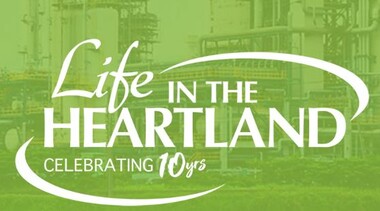
A formal partnership between four local organizations created Life in the Heartland in 2009 including: NCIA, Northeast Region Community and Emergency Response (NR CAER), Alberta's Industrial Heartland Association (AIHA) and Fort Air Partnership (FAP). The partnership established an improved method of communicating with the community by combining information and resources under one umbrella: Life in the Heartland. This initiative uses resident feedback to identify the following as key priority areas: Cumulative Effects, Risk Management, Air Quality, Traffic, Noise, Water Quality Education and Communication.
2004
MEGlobal Canada
MEGlobal is established via a joint venture between the Dow Chemical Company and Petrochemical Industries Company of Kuwait.
2010
Shell Canada
Shell announces it is withdrawing its multi-phased upgrader expansion application, focusing instead on ‘debottlenecking’ opportunities at Scotford’s existing upgrading facilities.
2010
Aux Sable Canada
Aux Sable Canada (ASC) and Shell Canada Products enact a long-term Offgas Processing Agreement that will secure an offgas feedstock source for the Heartland Offgas Plant. Set to become operational in the summer of 2011, it would make ASC the first company in Alberta to extract ethane and hydrogen from an upgrader or refinery offgas stream.
2010
Total E&P Canada/ Suncor
Total E&P Canada announces it will form an alliance with Suncor Energy, trading interests in the Fort Hills and Joslyn North Mine projects. Total E&P Canada is set to also take a 49 per cent share of Suncor’s unfinished Voyageur upgrader north of Fort McMurray. Total E&P Canada puts its Strathcona County bitumen upgrader project on hold. Note: Total E&P is no longer and NCIA member.
2011
The Northeast Capital Industrial Association celebrates 30 years
The Northeast Capital Industrial Association celebrates 30 years in your community.
2011
North West Upgrading
The Alberta Government and the partnership of North West Upgrading and CNRL formalize an agreement to process the 75,000 bbls/d of the province’s bitumen royalty volumes at the North West Bitumen Refinery.
2011
Shell Canada
Shell Canada celebrates the successful start of production from its Scotford Upgrader Expansion project in Canada. The 100,000 barrels-per-day expansion took upgrading capacity at Scotford to 255,000 barrels-per-day of heavy oil from the Athabasca oil sands.
2012
Implementation of Regional Noise Management Plan Begins
NCIA begins to implement its Regional Noise Management Plan (RNMP), which was developed in collaboration with the Energy Resources Conservation Board (ERCB) since 2007. It is the first initiative of its kind in North America to apply industry best practices for noise management.
2012
Wolf Midstream
Access Pipeline (now Wolf Pipeline Inc.) plans for their $1 billion Northeast Expansion project.
2012
Dow Chemical
Dow Chemical celebrates its 50th anniversary, and also engages in the largest capital investment and maintenance turnaround in Alberta at its Fort Saskatchewan site. The estimated financial gain from this for local business is estimated at over $3 million.
2012
North West Upgrading and Canadian Natural Upgrading Limited
North West Redwater Partnership (NWR), a partnership between NWU and Canadian Natural Upgrading Limited (CNUL), announces that the Board of Directors for each partner has approved the construction of Phase 1 of the Sturgeon Refinery.
2012
Pembina
Pembina acquires Provident Energy, a Canadian company, in a transaction valued at approximately $3.8 billion, positioning Pembina as a leading player in the North American energy infrastructure sector. The transaction allows Pembina to begin development of a new 65,000 barrel per day fractionator at its Redwater site.
2012
Shell Canada
Shell Canada announces it will go ahead with the Quest Project which will capture more than one million tonnes of CO2 annually when it starts up in late 2015. The storage site boasts some of the best geology in the world, and will be the first carbon capture and storage (CSS) project for an oil sands operation in Canada.
2013
Pembina
Pembina announces the twinning of its 73,000 barrel per day ethane-plus fractionator (Redwater Fractionation and Storage Facility or RFS II) at its Redwater site.
2013
Regional Noise Management Plan (RNMP) endorsed by AER and AUC
The Regional Noise Management Plan (RNMP) is endorsed by the Alberta Energy Regulator (AER) and the Alberta Utilities Commission (AUC).
2013
Wolf Midstream
Access Pipeline (now Wolf Pipeline Inc.) opens regional office in Fort Saskatchewan.
2013
North West Redwater Partnership
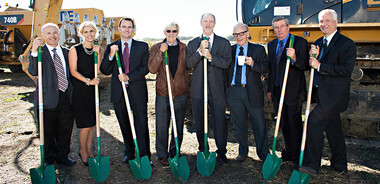
Official groundbreaking at the Sturgeon Refinery site kicked off construction of Phase 1 of NWR's bitumen refinery.
2014
Municipal Government Act Review
As a member of a multi-stakeholder group, NCIA conducts significant work on behalf of its member companies on the comprehensive revision of the Municipal Government Act (MGA) Review, specifically as it pertains to industrial property taxes.
2014
Wolf Midstream
Access Pipeline (now Wolf Pipeline Inc.) northeast expansion is commissioned, bringing diluted bitumen to the Industrial Heartland.
2014
Shell Canada
Shell celebrates its 30th anniversary at Scotford.
2014
Pembina
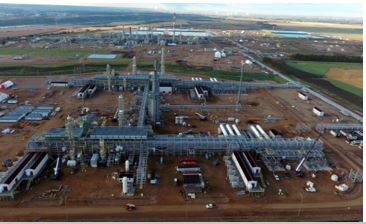
Pembina announces the third phase of its Redwater Fractionation and Storage Facility (RFS III), a new 55,000 barrel per day propane-plus fractionator along with a new high vapour pressure pipeline lateral that will extend the gathering potential of its Brazeau Pipeline in the Willesden Green area of south-central Alberta.
2014
Keyera
Keyera commissions a rail terminal at Josephburg to optimize propane movement out of Western Canada. On July 24, 2015 Keyera Josephburg Terminal loads it first car of propane.
2015
Regional Noise Management Plan models updated
The Regional Noise Management Plan (RNMP) models are updated and released publicly in October.
2015
Shell Canada
Shell Canada Quest project start up.
2015
Keyera
Keyera commissions a 30,000 barrel per day de-ethanizer at the Fort Saskatchewan fractionation and storage Facility.
2016
Pembina
Pembina commissions RFS II. With RFS II in service, Pembina's Redwater fractionation capacity will more than double to 155,000 bpd.
2016
Keyera
Keyera commissions an additional fractionation train at the Fort Saskatchewan fractionation and storage facility more than doubling the facility's existing C3+ fractionation capacity from 30,000 barrels per day to 65,000 barrels per day. In conjunction with the fractionator, the project includes the construction of new product receipt facilities plus operational storage and pipeline interconnections.
2017
Completion of Industrial Effluent Characterization Program
The Industrial Effluent Characterization Program (ECP) is completed with the Government of Alberta. The ECP is an important component of implementing cumulative effects management on the North Saskatchewan River, particularly in the Devon to Pakan reach (Industrial Heartland Reach).
2017
Inter Pipeline
November 27, 2017 marks the 20th anniversary of Inter Pipeline first becoming a publicly traded entity.
2017
Pembina
RFS III is placed into service by Pembina adding 55,000 bpd of additional propane-plus fractionation capacity. Pembina's Redwater complex now has an aggregate fractionation capacity of approximately 210,000 bpd – the largest in the Canadian energy infrastructure sector. The Redwater complex processes NGLs such as ethane, propane, butane and condensate and includes 18 underground storage caverns, truck terminals and pipeline connectivity, and one of the largest private rail yards in Western Canada.
2017
North West Redwater Partnership

Community organizations celebrate with NWR at the announcement of first diesel from the Sturgeon Refinery, produced from synthetic crude oil as part of the commissioning and start up process.
2017
Keyera
To support future growth, Keyera completes the acquisition of 1,290 acres of undeveloped land adjacent to its Josephburg rail terminal in Alberta’s Industrial Heartland near Fort Saskatchewan.Strategically located in Western Canada’s liquids hub, Keyera expects the land to provide the company with a wide range of business opportunities for growth.
2018
ACCEL
ACCEL acquires ARC Resources. ARC purchased the field in 2005 with the intent to evaluate the potential to use CO2 injection to recover more of the remaining oil from this once prolific reservoir. Redwater is one of the largest oil pools in Canada. It was discovered in 1948 and drilled up to 40-acre spacing by 1955. ACCEL's current production in Redwater is more than 2,500 barrels of oil per day of high netback light oil. Production is through 45 Satellites directed to the Redwater Gas Conservation Plant (RGCP).
2018
Inter Pipeline Heartland Petrochemical Complex
Inter Pipeline announces final investment decision to construct Canada's first integrated propane dehydrogenation and polypropylene complex - the Heartland Petrochemical Complex.
2018
Regional Noise Management Plan models updated
The Regional Noise Management Plan (RNMP) models are updated and released publicly.
2019
Keyera
Keyera announces it is proceeding with the development of the KAPS pipeline system, a natural gas liquids ("NGL") and condensate pipeline system that will transport growing Montney and Duvernay production in northwestern Alberta to Fort Saskatchewan. Keyera has partnered with Energy Transfer Canada Pipelines to develop this open-access system with initial connections into Keyera's fractionation assets and condensate system in Fort Saskatchewan. This project is highly desired by industry as it provides an additional and alternative transportation solution to deliver production from Alberta's liquids-rich developments to market. KAPS is also an important link between Keyera's growing gathering and processing franchise in northwestern Alberta and its strong liquids infrastructure network at Fort Saskatchewan, creating a platform for significant future opportunities.
2019
Pembina
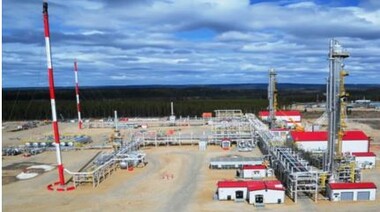
In February 2019, a $4.5 billion project to turn propane into plastic is announced as a joint venture between Pembina and Kuwait’s Petrochemical Industries Co.
2022
Keyera Corp. and CN announce the signing of a Memorandum of Understanding that will leverage their joint expertise to evaluate the creation of a specialized clean energy terminal in Alberta’s Industrial Heartland. The new infrastructure will aggregate conventional and clean energy from multiple sources to support transportation of Alberta’s diverse energy products and further strengthen the development of Canada’s green energy future.
2023

Dow Canada announces the Fort Saskatchewan Path2Zero expansion project which will create the world’s first net-zero emissions integrated ethylene cracker and derivatives site with respect to scope 1 and 2 emissions.This $6.5 billion USD (excluding government incentives and subsidies) expansion will be one of the largest recent capital investment in the Industrial Heartland.
2023
Pembina Pipeline Corp. is expanding NGL fractionating capacity to its existing Redwater fractionation and storage complex in Redwater, AB. The proposed $460-million (Can.) RFS IV project investment—including construction of new rail-loading capacity at the complex—will lift the site’s total fractionation capacity to 256,000 b/d.
2024
Effective May 14, 2024 the organization responsible for monitoring the air quality in the Industrial Heartland and surrounding area, Fort Air Partnership, is renamed to Heartland Air Monitoring Partnership. The new name was chosen to better represent the range of communities and counties served by the Airshed. These include but are not limited to: Bon Accord, Bruderheim, Elk Island National Park, Fort Saskatchewan, Gibbons, Josephburg, Lamont, Newbrook, Redwater, Thorhild and Waskatenau. The new Heartland Air Monitoring Partnership (HAMP) name is also intended to make the Airshed’s key air monitoring role clearer to residents.
2024
Linde announces it has signed a long-term agreement to supply Dow Canada with clean hydrogen for its Path2Zero project in Fort Saskatchewan. The company will invest more than $2 billion to build, own and operate a world-scale integrated clean hydrogen and atmospheric gases facility in Alberta, Canada.
2024
Final investment decision is made for Shell's Polaris carbon capture project at its Scotford refinery and chemicals complex near Fort Saskatchewan. The Polaris project is designed to capture about 650,000 tonnes of carbon dioxide annually from the Scotford complex. That works out to approximately 40 per cent of Scotford's direct CO2 emissions from the refinery and 22 per cent of its emissions from the chemicals complex
2024
Wolf Midstream proceeds with its NGL North Phase Two project northeast of Edmonton. The project will increase the natural gas liquids (NGL) production capacity of Wolf’s existing NGL North System, which was successfully commissioned in 2023. Once completed, the expanded system will have the ability to recover NGL from approximately 1.5 billion cubic feet per day of natural gas and produce over 90,000 barrels per day of NGL, including over 60,000 barrels per day of ethane.
2024
Alberta’s Industrial Heartland Association (AIHA) celebrates its 25th anniversary as a cornerstone of economic development, innovation, and sustainability in the province. From its inception, AIHA has been committed to promoting responsible industrial development that balances economic growth with environmental stewardship.
2024
Life in the Heartland celebrates 15 years in the community. Established in 2009, the organization takes a coordinated approach to improve resident awareness of and access to information, resources, and contacts about topics related to existing operations and industrial development.
2025

Heartland Air Monitoring Partnership celebrates 25 years of providing trusted air quality data in Alberta’s Heartland. The organization started as a grassroots effort and grew to a multi-stakeholder regional monitoring network, with representation from industry, all levels of government, and the public.
2025
Tidewater Midstream joins NCIA as a member company. Tidewater Midstream and Infrastructure Ltd. is a Fort Saskatchewan Sour Gas Processing Plant. The Inlet gas undergoes a cryogenic process to produce dry gas and LPGs (mostly Ethane).